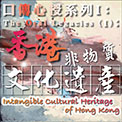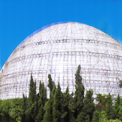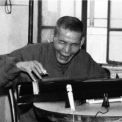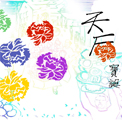 Collections
Collections The Oral Legacies Series II: The Representative List of the Intangible Cultural Heritage of Hong Kong
The Oral Legacies Series II: The Representative List of the Intangible Cultural Heritage of Hong Kong Tin Hau Festival in Hong Kong
Tin Hau Festival in Hong Kong Rituals and Activities Related to the Tin Hau Festival
Rituals and Activities Related to the Tin Hau Festival
Rituals and Activities Related to the Tin Hau Festival
The folk tradition of worshipping “Mazu” was inscribed onto UNESCO’s Representative List of the Intangible Cultural Heritage of Humanity in 2009. The Tin Hau Festival tradition of Hong Kong forms an important component of Mazuism in China, not only because of its long history but also it is firmly rooted in the local community, with the festive practices perpetuated for centuries without interruption. To celebrate Tin Hau’s birthday, worshippers would visit the temples with offerings to thank the deity for her protection and blessings over the year. There would be other programmes such as the ritual of “receiving the deity”, “shengongxi” (thanksgiving opera performance), activities related to the fa pau raffle, and parades.
The Ritual of “Receiving the Deity”
The Tin Hau Festival celebrations are mostly held at the open space in front of the Tin Hau temples. If some festive activities are to be held elsewhere, the Festival Committee would reverently “invite” Tin Hau out from her temple by carrying her small statue in a procession to the venue. Such a ritual is called “receiving the deity”. Other deities in their temples in the same district may also be “invited” in the same manner and carried to the bamboo theatre that houses all the gods to join in the celebration.
In this ritual, the sacred sedan chair carrying the Tin Hau statue would be escorted by members of the Festival Committee. The procession is led by unicorn or lion dance as it goes round the neighbourhood to give blessings to the residents.
Shengongxi (thanksgiving opera performance)
“Shengongxi” is a traditional theatre performance staged as a way to thank the deities for their protection, usually held on the birthdays of deities, the Jiao festival, kaiguang (rituals for dedication, consecration and sanctification), and during traditional festivals. Currently in Hong Kong, there are about 15 communities that stage thanksgiving opera performances on the birthday of Tin Hau: Sai Wan in Cheung Chau, High Island in Sai Kung, Cha Kwo Ling, Po Toi Island, Tsing Yi, Peng Chau, Shek O, etc. The performances are mostly Cantonese operas, which run for three to four days. The troupes would perform not only the popular repertoires but also the traditional set pieces that serve as “stage warmers”, such as Prime Minister of the Six States, Bestowing Longevity, Blessing by the God of Fortune, A Fairy Returns Her Son to the Mortal Father, etc. The purpose is to entertain both deities and mortals, for the enjoyment of all.
Fa Pau and Its Related Activities
For the temple fairs, many local residents of a district or neighbourhood would form voluntary fa pau associations to continuously participate in the annual ritual activities on the birthday of deities. Fa pau are lightweight towers of eight to nine feet tall, crafted with paper and bamboo strips and used as tributes to the deity. In the recessed middle is a wooden statue or painted image of the deity being honoured. Hanging on the frame are many good luck charms and auspicious items.
In most of the temple fairs celebrating Tin Hau Festival, there would be programmes related to the fa pau. The highlight is the fa pau exchange, which is what most worshippers have come for. On the birthday of Tin Hau, every fa pau association will “return” a new fa pau to the temple. The Festival Committee would then either conduct a fa pau race or raffle lots to redistribute the fa pau to the participating fa pau associations. They are considered talismans of luck and blessings from Tin Hau, to be taken back to their own neighbourhood for worship until the next year, on which occasion the whole cycle begins again with the associations “returning” the new fa pau for a new raffle.
Nowadays, to avoid violent physical contact during the fa pau race, the alternative method of drawing lots has taken over. Only a few districts such as Po Toi Island have retained this custom.
Parades
In some districts of Hong Kong, the Tin Hau Festival activities may include parades on land or at sea.
For example, in Shap Pat Heung, Tai Po Market, Cha Kwo Ling etc., the ritual of “returning the fa pau” has become a festival parade. The fa pau associations would gather at a meeting point, then form a procession to carry the fa pau to the Tin Hau temple. Leading the way would be a dragon dance, a lion dance, a unicorn dance and the mythical wealth-bringing beast of pixiu, followed by piu sik (floating colours parade), tei sik (actors dressed up as characters walking in line), parade floats, bands playing Western or Chinese music, song-and-dance troupes etc. As they move along the main street of the neighbourhood, they make a stunning sight on the deity’s birthday.
The Tin Hau Festival cum Jiao Festival celebrations at High Island, Sai Kung is “Tin Hau’s parade at sea”. It is a unique ritual to appease the spirits of those who died at sea. The deity’s small statue would be “invited” out of the temple, placed in a sacred sedan chair and escorted to a boat, which would be tied with strings to another two boats ahead in a gesture of being “towed” along. The sea entourage would sail around the waters of High Island and conduct a ritual to invoke blessings from the Tin Hau to keep all fisherfolk and sailors safe on the waters, have bumper catch, and peace on land and on the sea.







